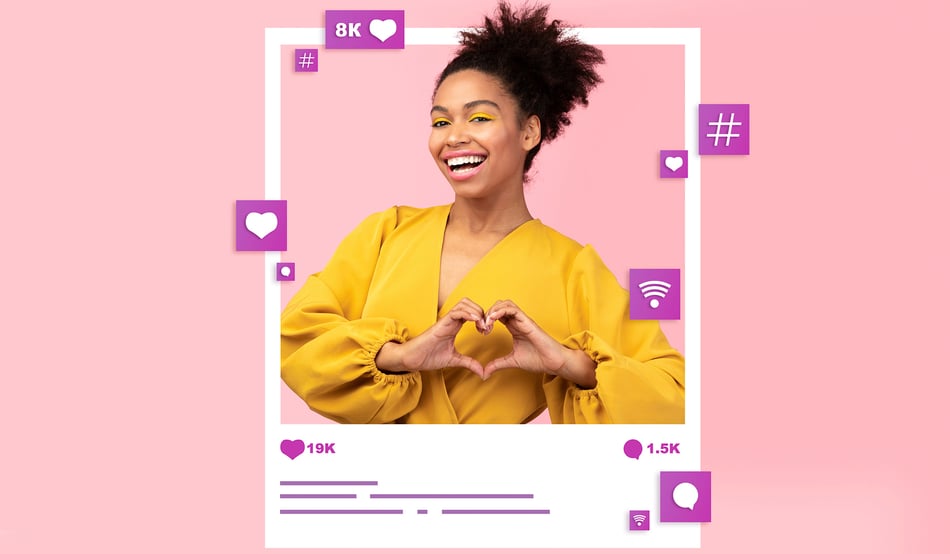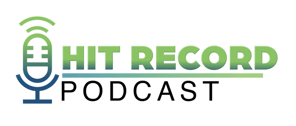Episode 50 - What Impacts An Influencer Can Have for Your Bank or Credit Union


Don't Miss An Episode, Subscribe Now

Your bank or credit union should be better leveraging the people in your community to spread the word of the quality customer service and community support your institution provides. In this episode we discuss how to:
- Set a clear expectation of influencer deliverables based on what you need for your financial institution.
- The different types of content you'll want the influencer to create.
- Which platforms you should focus on.
Transcription:
If you're looking for best practices for your bank or credit union, join us while we talk all things sales, marketing, and strategy for financial institutions. Let's make it happen with FI GROW Solutions.
Hi there. I'm Meredith Olmstead, CEO, and founder of FI GROW Solutions, and I am here with Sophie Bawany. Say, hi, Sophie.
Hi guys.
Sophie is one of our inbound marketing specialists. She's also our social media guru, and she knows so much about social media marketing and influencers and how to leverage social media for inbound marketing for financial institutions. So, we are an inbound marketing agency. We work exclusively with banks and credit unions, and I was just having a great conversation with Sophie about influencers in general and how a bank or a credit union should be better leveraging people in their communities, basically, or around them, to get the word out about what they do for their customers and their members. So I said, "You know what, Sophie, let's stop. Let's hit record on this. I think this is really worth sharing with a wider audience." So, I want to just pick her brain a little bit and let her share a little bit about what she's seeing that works really well. So, first of all, in a nutshell, Sophie, what is an influencer? For people out there who are living under a rock and don't know what the influencer is?
No, it's a common question. Influencers are members of a community, somebody who has influence, somebody who posts on social media, has a following, and ideally, any brand that wants to collaborate knows that that following and your target audience align. So, it's like a relationship where you have people, we need to get to them, let's work together.
So, we did a podcast a couple of weeks ago, Sophie and I did, about how to pick an influencer, find an influencer that works with your institution, and we really talked about why they're beneficial for financial institutions. So, I don't want to totally redo that entire conversation, but in a nutshell, Sophie, in one or two sentences, why is it good for a credit union or a bank to work with a local influencer?
I mean, I feel like every credit union we've worked with, everyone has the same goal, and that is to reach a larger audience. Your demographics are changing. When you have Gen Z and millennials on social media, the best way to get that message out is through social media.
Right. And also, honestly, if your audience that you are trying to target is in these places, you have to meet them where you are. I'm always complaining if I'm dealing in a sales situation and I'm emailing somebody and they're calling me, I get super irritated because they're not respecting my channel of communication. It's the same when it comes to reaching a larger market in marketing or a larger audience in marketing. If those people are watching TV, then you would want to have advertisements in front of them on TV. If they're streaming, you know, if that's where they used to be, if they were reading the newspaper, you'd put an ad in the newspaper. But in this case, you're really trying to reach a younger audience, and those people are interacting with influencers on a daily basis, so you need to be meeting them on those channels where they're already living their life, basically.
Okay, so say a financial institution, a credit union, or a bank has picked an influencer and they're moving forward with them. What we wanted to talk about was what do you have that influencer do? What are you going to... What is that? What are they going to accomplish now for your financial institution? So, let's talk about what are some of the different kinds of content or different kinds of impacts that that person can have going forward after you start the relationship?
So, once you start the relationship, you want to set a clear expectation of deliverables based on what you need for your financial institution. If you think you have a lot of people coming in with questions, maybe a great option is to host a live Q&A session or a social media takeover where the influencer takes over your Instagram account or your TikTok and finds a compelling, fun way to answer questions so that the younger audience is engaged in listening-
Okay, cool.
Yeah.
So, it could be like a live event, either in person or it could be online, or it could be a combination. It could be something that they film in person with a group and then you put it online as a webinar or something. But also, the thing that you said to me about "how-to" videos, which is why I said we need to make this as a podcast. What did you say about "how-to" videos and tutorials or whatever, and influencers?
Yeah. 40% of our followers on Instagram are going on social media to learn a skill. So, a "how-to" tutorial is always valuable, and people always think, "Well, how are we going to relate that with a financial institution?" Some people don't know how to apply for loans. Some people don't know the basics. A lot of you, the younger generation, if you say, "Hey, how do you get a car loan?" They don't know. So an easy, fun way of teaching someone that short couple steps would go a very long way.
Yeah. Yeah. I think "how-to" videos, it's funny, we think of them being like, "Oh, makeup tutorials," and that's what I think. I'm old, so I'm always wanting to figure out how do I do my makeup better, but you could do "how-to" tutorials with an influencer and achieve a very similar experience for people. Okay, cool. What else would you have an influencer do for a financial institution?
You know what? Short form content, we have short form videos, and we have long form videos, and reels, it's a very common question, is how long should they be? That's like the question everyone asks. And there's a really simple answer, and I think you're going to enjoy it, Meredith. Your reels should be like mini skirts, long enough to cover what they need to, but short enough to keep and grab someone's attention. And that just, depending on the topic or the subject, the length varies, and your financial institution and your strategist will work with you, and we can figure out how long the short need to be.
And we've seen, like I've seen influencers for financial institutions make a two-minute video grocery shopping, where they're actually saying, "Okay, here's how you find the best value for something. This is how you find sales on this. This is the best way that I would recommend that you budget around this category, or that." So, you can come up with some creative ways to give nice short pieces of financial advice. It doesn't have to be about, "Oh, how do you use your app?" or "How do you apply for a loan?" It could be, how do you budget? How do you plan for the future? How do you make sure that you don't, you know, you don't overdraft your checking account, or whatever it is.
So, the financial, you have to let that influencer be creative and realize that financial advice comes in all shapes and sizes and forms, and it can be lots of different content that could, you know, it may go outside of your products and services, but it's still building trust and loyalty, and it's getting eyeballs and help reminding people, "Hey, you are there as a trusted advisor and somebody who has my best interest at heart." And that is going a long way to keeping people connected with your brand and your institution.
And also, to add to that, you also want to think about your audience. A 26-year old doesn't want to hear about retirement savings. It needs to be something that's fun and compelling because they're probably on Instagram looking for funny memes or videos. So if there's a way to tie it in and kind of sneak in the education, that's a win for us.
Yeah. Is there anything else? So, a lot of this, we're talking about videos and "how-to" tutorials, long, short, webinars, those kinds of things. Any other kinds of content that you have seen work well coming from influencers?
Yeah, I mean, I think Instagram started as a photo platform. So, the static images and having these beautifully curated photos is always going to be a win. But with financial institutions, we like to tell them, especially with credit unions, outreach in the community, doing these events, doing book drives or any type of awareness. These are so important that it's really nice if you can have a beautiful image that just lives on an influencer's page because it shows that you're not just there to take someone's money. It's bigger than just a transaction.
Yeah, I've seen too, I know we have an influencer that works as a brand ambassador with one of our clients down in South Carolina, and I know she does a lot of blogging for that credit union as well, so it doesn't have to be just images or videos, it could definitely even be longer form content where it's written out. I mean, that does provide some value, especially on the websites. And also, I think she goes to live events even with like TV affiliates, and around town, and they even have her, I think, on billboards in their local community. So, those are all... There's really no limit to how much you can leverage these relationships. You just have to make sure that you have them kind of locked down contractually, that all of that content that's being created does belong to the institution and that you're very, very clear with your expectations with those relationships. So, awesome. Is there anything else we missed on influencers?
I mean, it's an ongoing topic. I think it's always evolving, but it's always great to get the start of what you can ask for. And then once that conversation starts, every credit union has unique needs. So, working with a strategist, working with your digital ads agency, we can kind of create a plan for you that works with your brand.
And with lots of ideas. And then maybe you start the relationship slowly. So, maybe you've got a six-month contract with an influencer, and you've got 10 different things that you want to accomplish with that person over the course of that six months. Then after four or five months, you reevaluate the relationship. If it's going well, maybe you renew it for six more months, but you up your game a little bit, or add to the content you're creating. So, awesome. Well, great stuff, Sophie. Thank you so much.
Just a reminder, if you guys want to learn more about influencers and social media for banks and credit unions, please visit figrow.com. We have lots of other episodes as well as blogs and case studies, and all kinds of information on our website. And otherwise, let's just all get out there and make it happen.








Blog comments